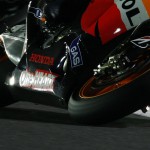Leatt have an explosion of colour and innovation in front of us but it is hard not to look at the rack of shotguns to one side. The South African brand – 2016 marking ten years since they first sold their award-winning (and still best-ranked according to www.vitalmx.com) neck brace protection – have drawn most of the international press corps to the Mike Raahauge shooting range in California the day before the season-closing Monster Energy Grand Prix of the USA, and the tables and stands on show demonstrate just how much Leatt have applied their science-based approach to a glut of worthwhile products.
The GPX neck brace is well known and has evolved over five versions to the point where it is the ‘Kleenex’ definition/standard of the segment. Their chest protectors aren’t far behind and are already highly rated for their fit and function. Armourgel sculpted gloves sit beside hydration packs and other protective items, such as the eye-catching single-hinge knee brace. The GPX helmet takes pride of place at the centre of the collection that now also features some futuristic material and fabric on their motocross gear lines.
Walking around Leatt’s compact lab and office facility in Cape Town five years ago company founder Dr Chris Leatt vowed that the firm would not veer towards being a ‘me too’ enterprise; churning the production line through the night simply to fill the shelves with other branded objects. Leatt’s offerings had to make a difference.
“Leatt was a neck brace-only brand for four years and then branched into protection mainly due to compatibility issues, riders were taking off body protection to wear the brace,” explains Todd Repsher, General Manager of the Americas, chatting through the ’17 range and expounding on the evolution of Leatt before moving onto the day’s clay pigeon duties. “Now it is seems every piece of protection out there on the market is compatible with neck protection.”
“As a brand we have really worked on connecting with the riders and then enhancing their experience,” he adds. “We have moved back to our core reason-for-being and there are now twelve different levels of body protection; this has come out of riders’ experiences.”
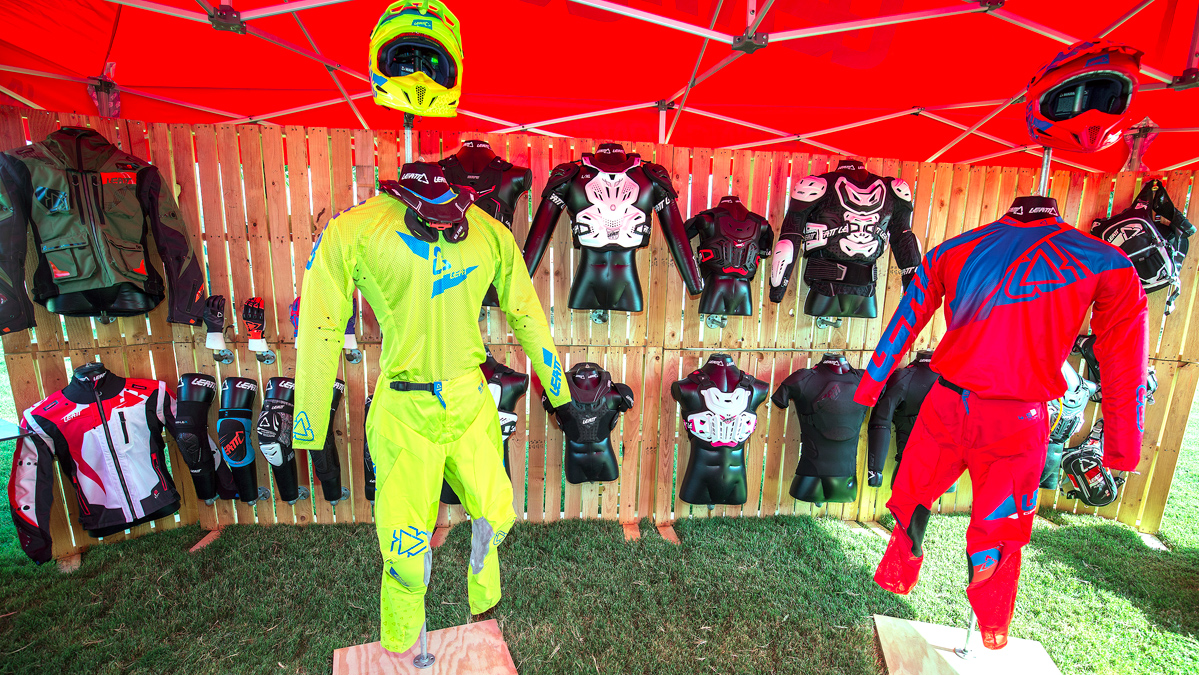
Leatt are excited about their helmet that now reaches a second generation model and with increased variety of design. There are off-road and bicycle versions and several important key points that cause the GPX lid to standout from a market in which there is so much choice. Crucially Leatt – like trailblazers 6D and MIPS [“MIPS is great and can now be found in 72 brands of helmet”] – are looking at how head safety can offer much more than simply a hard shell, absorbent liner and comfy padding.
“We were able to use the expertise and experience of the lab, all the research and at least three biomedical engineers who had been working and testing with many different brands and models,” says Repsher. We saw first hand how Leatt were working their way through the helmet market in their biomechanical tests for the neck brace; it is hard to imagine another company gaining so much indirect data on one product through the fine-tuning of another. “Any impact around 70Gs is a concussive level, however just 40Gs with rotation can kill you. Brain rotational protection is on everybody’s mind.”
“We found that if we reduce the weight [of the helmet] by 10% then it was like-for-like in brain rotation and other measures. Then if we reduced the shell size then we could effectively double that reduction and this was the start of our pursuit of a smaller helmet,” he says. Shell size was shrunk thanks to 3D in-moulded foam and the 360 turbine technology (essentially Armourgel shock absorbers) was essential for that drastic drop of up to 40% of rotational acceleration to the head and brain. “Don Morgan, an Australian helmet guru, came up with intersected ‘V’ foam that is moulded straight onto the shell instead of being inserted and where air bubbles force the need for a bigger shell.” The effect of Morgan’s ‘Conehead’ technology permitted Leatt to craft a lid that is noticeably more compact; it takes some time to digest the fact that the GPX actually claims to be a safer helmet when everything about its smaller dimensions instinctively propels you to think the opposite. It is sturdy in the hand and the aesthetic of the 2017 models are easier on the eye compared to the launch helmets.
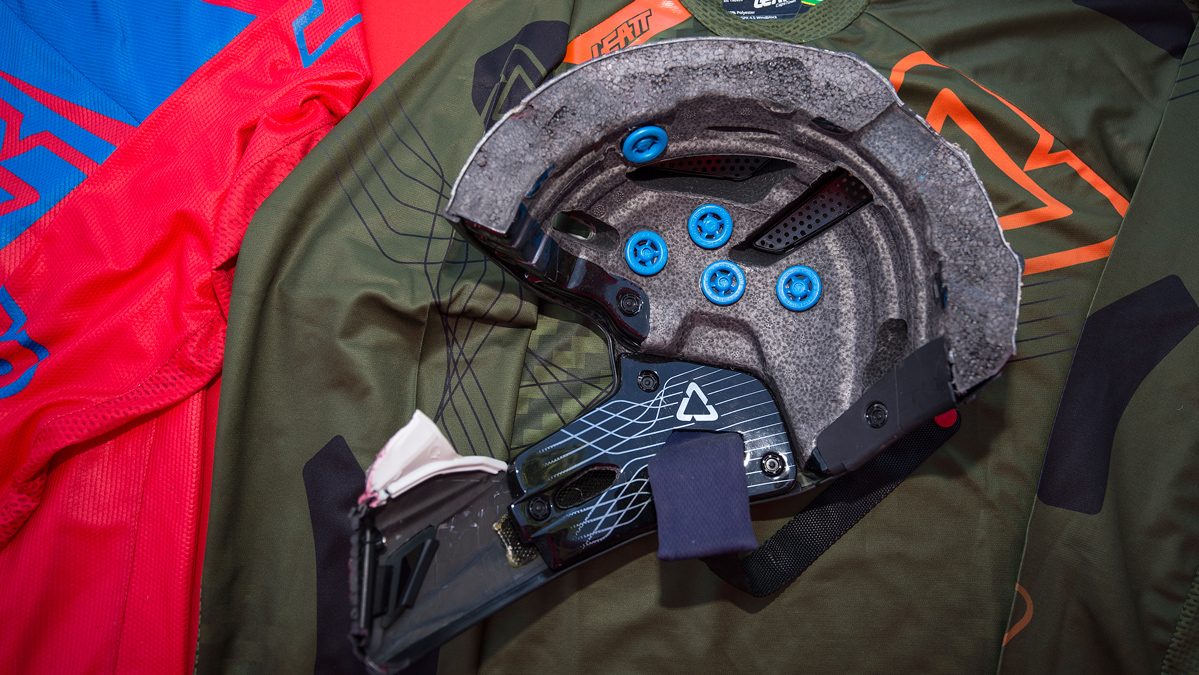
Repsher demonstrates the shell’s robustness with a 3.3m drop test and a pointed lump of steel used in many official tests (ECE and DOT). The two helmet options feature carcasses of carbon and a carbon-fibreglass weave with 100 grams difference in weight. Repsher also says that the 191 holes around the helmet for ventilation capabilities made for “a huge technical challenge.”
Two other curiosities grabbed attention. The GPX also features hydration tube compatibility and the padding itself boasts removable foam rather than the whole section itself being withdrawn, meaning the inside of the helmet collapses much more easily for fast extraction.
Another highlight of the 2017 line-up was Leatt’s divulgence of their fondness and link with Armourgel. Repsher amusingly demonstrating it’s potency by wrapping his hand in a lump of hard ‘goo’ (like silly putty) and whacking it with a hammer. “Armourgel is a British company whose product defies Newton’s laws by being able to absorb impact without deflection or cause,” he says, digits thankfully free of harm. “Just 4mm can halt a 22 callibre pellet and we use 6mm in most of our protection. It is not affected by hot or cold but it is expensive and heavy; it is has its Pros and Cons.”
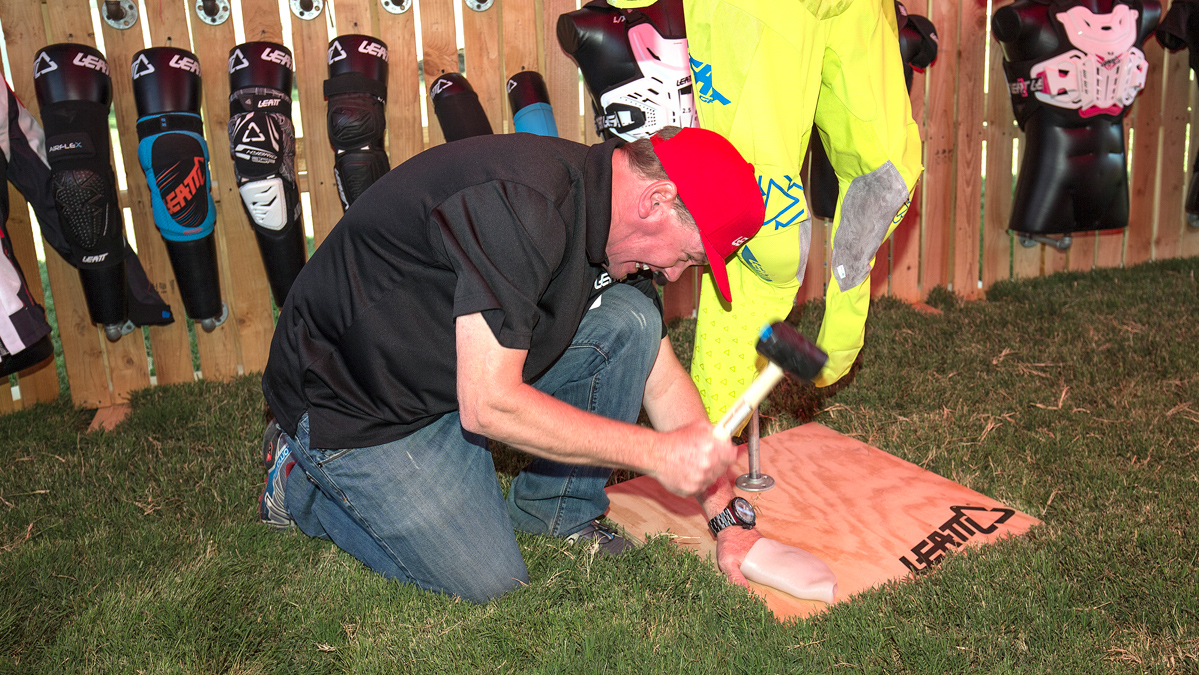
Armourgel is conspicuous on the nine different off-road gloves with Lite, Windblock and Flow versions with differing degrees of protection. The handwear links up nicely with Leatt’s first dip into riding kit. “We’ve developed a great brand and we know fans have a passion for it and want to express that,” Repsher comments by way of justification for Leatt entering another crowded segment. “We were being asked about it so we worked on the MX gear for two years because we wanted something different.”
The difference comes through four price levels, headed by the top-of-the-range ‘5.5’. “The jersey is very stretchy, light and features no stitching as the seams are taped and welded,” Repsher says pulling a lemony shirt. “It also has a stretchy collar to fit over protection.” Windblock and Vented incarnations fulfil other requirements depending on the weather and season. Leatt’s attention to detail comes through with the riding pant and the IKS (internal Knee brace System) which features several layers all moving, sliding and combing to reduce wear. If the jersey weighed almost nothing and was prevalent with four-way stretch and venting then Leatt had their calling card on the pants with this function. “Knee braces ruin the pant, rub the plastics and reduce the contact feeling with the bike so our IKS system features a four-layer design,” Repsher reveals. “The first is slippy and the next is a layer of nanogrip that has been bonded. It actually works very well when wet. We had such a good reaction with the nanogrip on the gloves that we have inserted it into pant.”
“75% of the pant is made from four-way stretch fabric and the traditional motocross pant has been flipped around; there is only rigid material in certain sections,” he adds before pausing and admiring the state of how fabric and fabrication has advanced. “The material market is amazing; there is so much out there. We are just at the tip of the iceberg.”
With our faith embellished against some of the worst motocross and off-road riding can throw at us, the idea of spitting some hot lead into the Californian blue above doesn’t seem so daunting. And – as we’d come to see – unlike some of their guests, Leatt seems firmly on target.
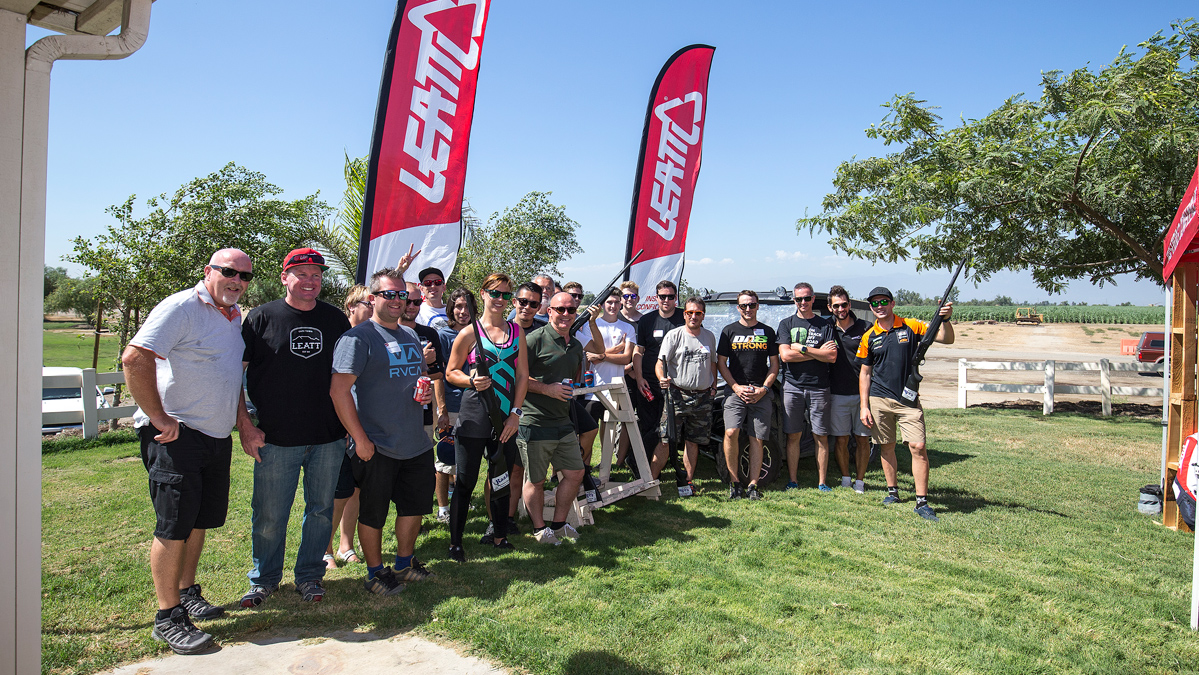
Photos by Ray Archer


